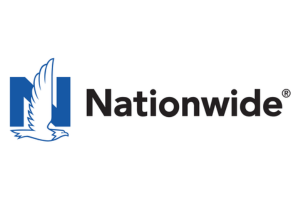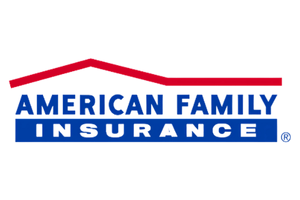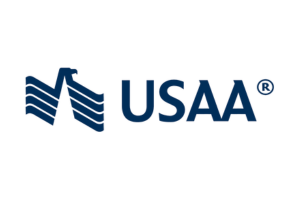How To File a Homeowners Insurance Claim in Montana
Learn the step-by-step process of filing a homeowners insurance claim in Montana. Discover valuable tips and insights on how to navigate the claim process smoothly and ensure you receive the coverage you deserve.
Read more Secured with SHA-256 Encryption





Save Money by Comparing Insurance Quotes
Compare Free Home Insurance Quotes Instantly




Table of Contents
Table of Contents


Insurance Content Managing Editor
Daniel S. Young began his professional career as chief editor of The Chanticleer, a Jacksonville State University newspaper. He also contributed to The Anniston Star, a local newspaper in Alabama. Daniel holds a BA in Communication and is pursuing an MA in Journalism & Media Studies at the University of Alabama. With a strong desire to help others protect their investments, Daniel has writt...
Daniel S. Young


Licensed Insurance Producer
Dani Best has been a licensed insurance producer for nearly 10 years. Dani began her insurance career in a sales role with State Farm in 2014. During her time in sales, she graduated with her Bachelors in Psychology from Capella University and is currently earning her Masters in Marriage and Family Therapy. Since 2014, Dani has held and maintains licenses in Life, Disability, Property, and Casualt...
Dani Best
Updated September 2024
If you’re a homeowner in Montana, having homeowners insurance is crucial for protecting your investment. But what happens when disaster strikes, and you need to file a claim? In this comprehensive guide, we will walk you through the process of filing a homeowners insurance claim in Montana. From understanding the basics of homeowners insurance to documenting the damage and meeting with adjusters, we will cover it all.
Understanding Homeowners Insurance in Montana
The Basics of Homeowners Insurance
Before we dive into the specifics of filing a claim, let’s start by understanding the basics of homeowners insurance. Homeowners insurance is a type of property insurance that provides financial protection to homeowners in the event of damage, theft, or certain liabilities. It typically covers the dwelling, additional structures, personal belongings, and personal liability.
When you purchase homeowners insurance, you’ll need to choose between two main types: actual cash value (ACV) and replacement cost value (RCV). ACV policies factor in depreciation, meaning you’ll receive a reduced payout based on the item’s current value. On the other hand, RCV policies cover the cost of replacing the item at its current market value, without deducting depreciation.
Understanding the differences between ACV and RCV policies is crucial when selecting homeowners insurance. ACV policies may be more affordable initially, but they may not provide sufficient coverage to replace your belongings or rebuild your home in the event of a major loss. RCV policies, while typically more expensive, can offer greater peace of mind knowing that you’ll be able to replace your belongings or rebuild your home without significant out-of-pocket expenses.
Specifics of Homeowners Insurance in Montana
In Montana, homeowners insurance policies can differ from those in other states. It’s important to be aware of any specific provisions or exclusions that may apply. Montana is prone to natural disasters such as wildfires, hailstorms, and severe winter weather. As a result, your policy might include special provisions or deductibles for these types of events. Review your policy carefully to understand what is covered and any limitations or exemptions that may apply.
Living in Montana, you may face unique challenges when it comes to homeowners insurance. The state’s vast landscapes and breathtaking wilderness can be both a blessing and a potential risk. While the picturesque mountains and forests offer unparalleled beauty, they also increase the likelihood of wildfires. Montana experiences an average of 1,500 wildfires each year, which can pose a significant threat to homes and properties.
When selecting homeowners insurance in Montana, it’s crucial to consider the specific risks associated with the state’s geography and climate. Your policy may include provisions for wildfire damage, ensuring that you’ll be financially protected in the event of a fire-related loss. Additionally, due to the risk of hailstorms, which can cause extensive damage to roofs and windows, your policy might have specific deductibles for hail-related claims.
Furthermore, Montana’s harsh winters bring heavy snowfall and freezing temperatures, which can lead to burst pipes and other weather-related damages. Your homeowners insurance policy may have provisions to cover these types of losses, but it’s important to review the details to ensure you have adequate protection during the winter months.
Montana’s unique landscape also attracts outdoor enthusiasts who enjoy activities such as hunting, fishing, and hiking. If you have valuable outdoor equipment, such as camping gear, fishing rods, or hunting rifles, it’s essential to understand how your homeowners insurance covers these items. Some policies may offer limited coverage for outdoor equipment, while others may require additional endorsements or separate policies to fully protect your valuable belongings.
Lastly, Montana’s rural areas may have different considerations when it comes to homeowners insurance. If you live in a remote location, further away from fire stations or emergency services, your policy might have specific provisions regarding response times and coverage in case of emergencies.
By understanding the specifics of homeowners insurance in Montana, you can make informed decisions when selecting a policy that adequately protects your home, belongings, and personal liability. Take the time to review your policy, ask questions to your insurance provider, and ensure that you have the coverage you need to safeguard your most valuable assets.
Free Home Insurance Comparison
Compare Quotes From Top Companies and Save
Secured with SHA-256 Encryption
When to File a Homeowners Insurance Claim
Identifying Covered Damages
Before filing a homeowners insurance claim, it’s essential to identify the damages covered by your policy. Common covered damages include fire damage, water damage from burst pipes, windstorm damage, theft, and vandalism. However, not all damages are covered, so it’s crucial to review your policy documents to determine if your situation qualifies for a claim.
Let’s take a closer look at some of the covered damages:
Fire damage: Fire can cause extensive damage to your home, destroying not only the structure but also your personal belongings. It’s important to document the extent of the damage and gather any necessary evidence to support your claim.
Water damage from burst pipes: Burst pipes can lead to significant water damage, resulting in structural issues and potential mold growth. If you experience a burst pipe, it’s crucial to act quickly to mitigate the damage and contact your insurance company.
Windstorm damage: Strong winds can cause severe damage to your property, including roof damage, broken windows, and fallen trees. Make sure to document the extent of the damage and take necessary steps to prevent further harm, such as covering broken windows or tarping damaged areas.
Theft: If you’re a victim of theft, your homeowners insurance may cover the stolen items. It’s important to file a police report and provide any evidence of the stolen items to support your claim.
Vandalism: Vandalism can result in property damage, such as broken windows, graffiti, or destruction of personal belongings. Document the damage and report it to your insurance company as soon as possible.
Timing and Deadlines for Filing a Claim
Once you’ve identified that your damages are covered, it’s important to understand the timing and deadlines for filing a claim. Most homeowners insurance policies require you to report the damage to your insurance company as soon as possible. In Montana, the law requires insurers to acknowledge receipt of the claim within 10 working days and respond within 30 calendar days. However, it’s essential to check your specific policy for any time constraints imposed by your insurance company.
Filing a claim promptly is crucial for several reasons:
Prompt action: Reporting the damage promptly allows your insurance company to assess the situation and initiate the claims process efficiently. This ensures that you receive the necessary assistance and support as quickly as possible.
Preventing further damage: By filing a claim promptly, you can take necessary steps to prevent further damage to your property. For example, if you experience water damage, your insurance company can guide you on how to mitigate the damage and prevent mold growth.
Meeting deadlines: Each insurance company may have specific deadlines for filing a claim. By reporting the damage promptly, you can avoid missing any deadlines and ensure that your claim is processed smoothly.
Remember, it’s crucial to gather all the necessary documentation and evidence to support your claim. This includes photographs, receipts, police reports, and any other relevant information that can help validate your claim.
Steps to File a Homeowners Insurance Claim in Montana
Montana, known for its breathtaking landscapes and rugged beauty, is a state that experiences a variety of weather conditions throughout the year. From heavy snowfall in the winter to thunderstorms in the summer, homeowners in Montana may find themselves in need of filing an insurance claim for damages to their property. If you find yourself in such a situation, here are the steps you need to take to file a homeowners insurance claim in Montana.
Contacting Your Insurance Company
When faced with damages to your home, the first step is to contact your insurance company. In Montana, you can typically find the contact information for your insurer on your policy documents or the insurance company’s website. It’s important to reach out to them as soon as possible to begin the claims process. When contacting your insurer, be prepared to provide detailed information about the damages, including the date, time, and cause of the incident. This will help the insurance company assess the situation and determine the best course of action.
Documenting the Damage
After notifying your insurance company, it’s crucial to document the damage thoroughly. This step is essential in ensuring a smooth claims process. Take photos or videos of the affected areas and any damaged possessions. Capture the extent of the damage from different angles to provide a comprehensive view. Make a detailed list of damaged items, including their value and a description. This inventory will help the insurance company accurately assess the value of your losses. Additionally, keep any receipts or invoices related to repairs or replacements, as these will serve as proof of expenses incurred. The more thorough your documentation, the smoother the claims process will be.
Meeting with the Adjuster
Once you’ve filed a claim and provided the necessary documentation, an insurance adjuster will be assigned to assess the damages. The adjuster is a trained professional who will evaluate the extent of the damage and determine the amount of compensation you are entitled to. They will schedule an appointment to visit your property and conduct a thorough inspection. It’s important to be present during this inspection to ensure that all damages are properly documented. This is also an opportunity for you to ask any questions or provide additional information that may be relevant to your claim.
Reviewing and Accepting the Settlement
After the adjuster has assessed the damages, they will provide you with a settlement offer. This offer represents the amount of compensation the insurance company is willing to provide to cover the damages. Take the time to carefully review the offer and compare it to your policy coverage. It’s important to understand the terms and conditions of your policy to ensure that you are receiving a fair settlement. If you have any concerns or believe the offer is insufficient, discuss them with your insurance company. They may be able to provide additional information or reassess the claim. On the other hand, if you’re satisfied with the settlement, you can accept it and begin the process of repairing or replacing the damaged property.
Filing a homeowners insurance claim in Montana can be a complex process, but by following these steps, you can navigate through it with confidence. Remember to keep all communication and documentation organized throughout the process, as this will help streamline the claims process and ensure a successful outcome. Your home is your sanctuary, and having the right insurance coverage and knowing how to file a claim will help protect it when unexpected events occur.
Common Mistakes to Avoid When Filing a Claim
When it comes to filing a claim with your homeowners insurance, there are a few common mistakes that you should be aware of and avoid. By understanding these mistakes, you can navigate the claims process more effectively and increase your chances of a successful claim.
Failing to Document Damage
One of the most common mistakes homeowners make when filing an insurance claim is failing to document the damage adequately. It’s important to remember that your insurer will need evidence of the damage in order to process your claim. This means taking photos, videos, and making detailed lists of all damaged items.
When documenting the damage, it’s helpful to include close-up shots as well as wider shots that show the overall extent of the damage. Additionally, make sure to describe the damage in detail, noting any specific areas or items that have been affected.
By providing thorough documentation, you can help ensure that your insurer has a clear understanding of the damage and minimize the risk of disputes or undervaluation of your claim.
Waiting Too Long to File
Another mistake that homeowners often make is waiting too long to file a homeowners insurance claim. It’s understandable that dealing with the aftermath of a damaging event can be overwhelming, but delaying the claims process can have negative consequences.
By waiting too long to file a claim, you run the risk of additional damage occurring. For example, if your home has suffered water damage and you delay filing a claim, the water can continue to seep into walls and floors, causing further destruction.
Furthermore, insurance companies typically have specific time limits for filing claims. If you exceed these time limits, your claim may be denied altogether. To avoid these issues, it’s important to contact your insurance company as soon as possible after the incident to initiate the claims process promptly.
Overlooking Additional Living Expenses
In the event that your home is uninhabitable due to covered damages, you may be eligible for additional living expenses (ALE) coverage. This coverage helps cover the cost of temporary accommodations, meals, and other living expenses while your home is being repaired.
Many homeowners overlook the importance of ALE coverage when filing a claim. However, if you find yourself in a situation where you need to find alternative accommodations, this coverage can be a lifeline. It can help alleviate the financial burden of having to pay for temporary housing and other expenses out of pocket.
When filing your claim, make sure to inquire about the availability of ALE coverage and provide any necessary documentation to support your eligibility. By doing so, you can ensure that you receive the full benefits of your insurance policy.
In conclusion, understanding how to file a homeowners insurance claim and avoiding common mistakes is crucial for protecting your home and property. By familiarizing yourself with your policy, documenting damages thoroughly, and reporting the claim promptly, you can navigate the claims process with confidence and increase your chances of a fair settlement for your losses.
Frequently Asked Questions
What is homeowners insurance?
Homeowners insurance is a type of insurance policy that provides financial protection to homeowners in the event of damage or loss to their property, as well as liability coverage for accidents that may occur on the property.
When should I file a homeowners insurance claim in Montana?
You should file a homeowners insurance claim in Montana as soon as possible after experiencing damage or loss to your property. It is important to report the claim promptly to your insurance company to ensure a smooth claims process.
What steps should I follow to file a homeowners insurance claim in Montana?
To file a homeowners insurance claim in Montana, you should follow these steps:
1. Contact your insurance company: Notify your insurance company about the damage or loss and provide them with necessary details.
2. Document the damage: Take photographs or videos of the damage to your property as evidence for your claim.
3. Provide necessary information: Fill out any claim forms required by your insurance company and provide them with any requested documentation.
4. Cooperate with the claims adjuster: Work with the claims adjuster assigned to your case and provide them with any additional information or documentation they require.
5. Keep records: Keep a record of all communication and documentation related to your claim for future reference.
What information do I need to provide when filing a homeowners insurance claim in Montana?
When filing a homeowners insurance claim in Montana, you will typically need to provide the following information:
– Your policy number
– The date and time of the incident
– A description of the damage or loss
– Any relevant photographs or videos
– Contact information of any involved parties or witnesses
– Police or incident report, if applicable
What is the role of a claims adjuster in a homeowners insurance claim?
A claims adjuster is an insurance professional who assesses the damage or loss to your property and determines the amount of compensation you are eligible to receive from your homeowners insurance policy. They investigate the claim, review the evidence, and work with you and the insurance company to reach a fair settlement.
Can I hire a public adjuster to help with my homeowners insurance claim in Montana?
Yes, you have the option to hire a public adjuster to assist you with your homeowners insurance claim in Montana. Public adjusters are independent professionals who can help you navigate the claims process, negotiate with the insurance company on your behalf, and ensure you receive a fair settlement. However, keep in mind that public adjusters work on a fee or commission basis, which is typically a percentage of the claim settlement.
Get a FREE Quote in Minutes
Insurance rates change constantly — we help you stay ahead by making it easy to compare top options and save.

